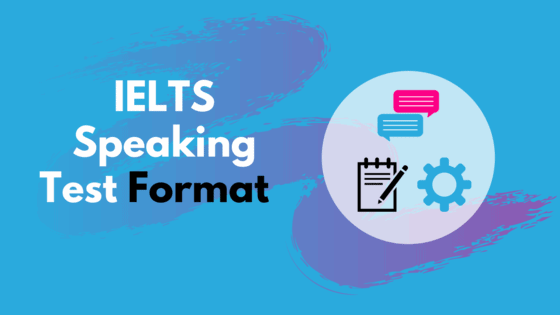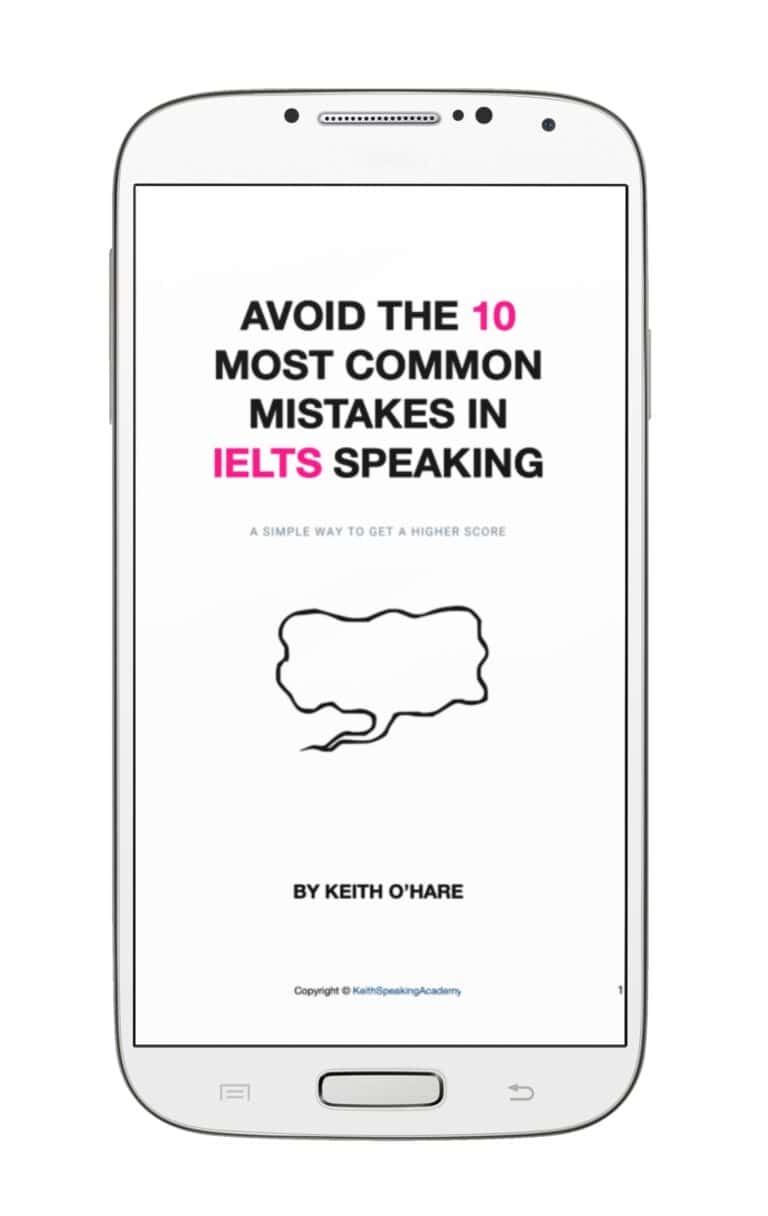IELTS Speaking Test Format

Table of Contents
IELTS Speaking Test Format: An Overview
The IELTS Speaking test format is quite simple. It has 3 parts and each part has a different goal and needs a different approach.
Part 1 includes your document (ID) check, some warm up, introduction questions and then questions about on 2 different topics related to you and your life.
Part 2 is a long turn where you have 1 to 2 minutes to talk about a topic you will be given in the test. You have 1 minute to prepare.
Part 3 is a deeper conversation based on the topic you talked about in Part 2.
The whole test will last 11- 14 minutes.
Notice the IELTS Speaking test is the same for both Academic and General modules.
As of July 2020, some test centres in some countries are delivering the speaking test by video calls. Find out more about which countries this applies to here.
Watch this video to get some top tips on all 3 parts of the test!
IELTS Speaking Test Format: Part 1
Name and ID check
This part of the test lasts 4- 5 minutes
At the start of the test the examiner will…
- Ask for your full name
- Ask what you want them to call you
- Ask to see your ID or passport
TIPS
- Arrive early
- Relax and smile as you walk into the room
- Have your ID ready (the same one you registered with)
- Don’t be too formal. IELTS Speaking is a test of natural, conversational English, not formal academic English.
Introducing yourself
Next you will be asked 2 or 3 questions on one of the following topics
WORK, STUDIES, HOMETOWN or HOME
TIPS
- These question are really a kind of warm-up for both you and the examiner.
- Use this time to get relaxed, and also to make a good first impression
- smile
- be confident
- use simple language to help you warm up
Topics 1 and 2
You will be asked 3 to 4 questions on a first topic and then a further 3 to 4 questions on a second topic. Topics are chosen from a wide bank of topics and questions, so there is no way of knowing what topics you will be asked.
TIPS
For these questions, you should
- give fairly short answers
- spend about 10 – 20 seconds on each answer
- not worry if the examiner interrupts you
- Most questions are about you, so talk about you and your own life and experience.
- Some questions are yes/no questions (closed questions), e.g. Do you like your hometown? However, never just answer yes or no. You need to expand your answer.
- Give a direct answer, explain why, and maybe add a detail or example.
Watch this video to see the IELTS Speaking Test Format for Part 1 + TIPS!
IELTS Speaking Format: Part 2
This part of the test lasts 3-4 minutes
The examiner will give you a Task Card (sometimes called a Cue Card) with a question. There will also be 3 bullet points to help guide your answer. You can use these bullet points to help you, but ou don’t have to.
You have 1 minute to prepare an answer, and then you have 1 to 2 minutes to answer.
The examiner may ask you a rounding-off question at the end. If you have spoken for the full 2 minutes, they may not ask you an extra question.
TIPS
- Make good use of the 1 minute preparation time.
- Speak calmly, not too fast
- Speak at least for 1:30 minutes
- At home, practice speaking for 2 minutes so you know how long that is
Watch this video to see the IELTS Speaking Test Format for Part 2 + TIPS!
IELTS Speaking Format: Part 3
Part 3 lasts for 4 – 5 minutes.
You will be asked further questions connected to the main topic in part 2. The examiner may also ask questions on some related sub-topics. You will typically get 4 or 5 questions, so you will need to give longer answers, often up to 1 minute or even longer, if appropriate.
However, don’t be surprised if the examiner interrupts you, this is common and normal.
The questions may relate to your life, but will also look at more general, wider themes, ideas and debates.
TIPS
- Here, you need to talk in more depth
- You need to do more than just give your opinion
- Learn to explain, justify, hypothesise, and evaluate
- When the examiner interrupts you (and they sometimes do if your answers are too long), relax, it will not affect your score
Watch this video to see the IELTS Speaking Test Format for Part 3 + TIPS!
Ending the test
The examiner will tell you when the test has finished.However, they do not give you the score then.
The examiner will say something like ‘this is the end of the test.’
You should just say
thank you!
…smile,
and leave the room!
Are You Preparing for IELTS Speaking the Wrong Way?
Discover the most common mistakes in IELTS Speaking and what to do instead so you can speak with confidence and ace the IELTS Speaking test. 😁

Now you know all about the format of the IELTS Speaking test, go and find out about how it is evaluated.

